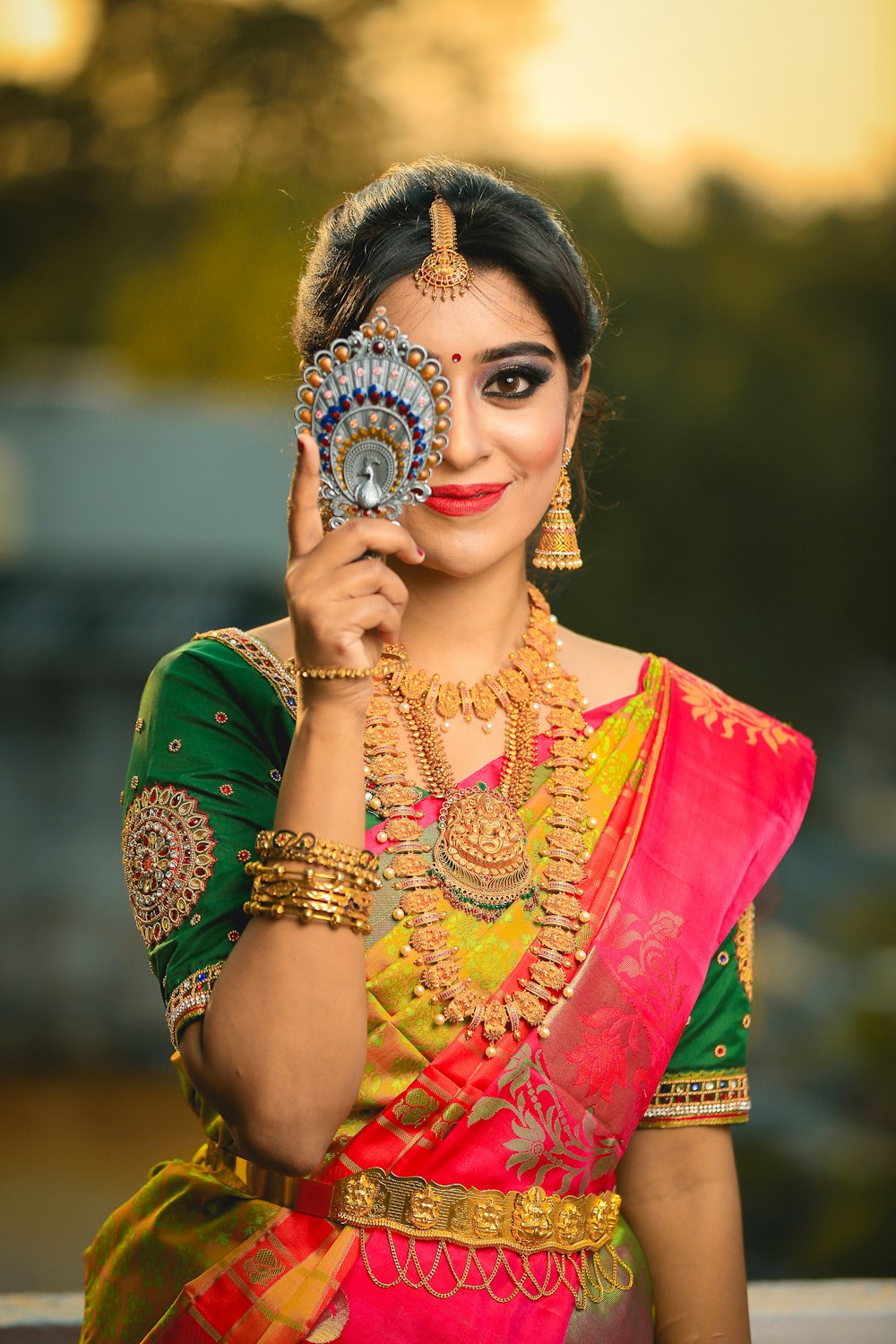
India is known as the “Land of Diversities”.
This diversity gives rise to numerous cultures, rituals and customs followed in India.
The rituals are beliefs passed down to us from our ancestors.
Some customs and rituals have superstitious beliefs attached to them.
But, mostly, every Indian culture has a scientific reason behind it.
Scientific reasoning has become an essential aspect of the 21st century.
Scientific reasoning helps us understand the ritual well and the reason behind its existence.
“16 Shringar” is one such ritual for the ladies. The scientific reasons behind the concept of “Solah Shringar”, will help us understand the importance of adorning them.
“Solah Shringar” is made of two Hindi words, that is, ‘Solah’ which means ‘Sixteen’ and ‘Shringar’ means ‘Adornments’
‘Solah Shringar’ in English can be termed as ’16 Adornments’.
This ritual talk about adorning the “16 Shringar” items of an Indian bride.
By adorning these 16 items, a lady will not only look beautiful; but they also have spiritual and health benefits attached with it.
An Indian bride adorns these “16 Shringar” on her marriage day, because, “Shringar” incorporates ‘Shri’ in it, which is another name of ‘Goddess Laxmi’, the goddess of beauty, luck and wealth.
So, an Indian bride or a newly married woman is considered “Laxmi”, because she brings prosperity with her.
The “Solah Shringar” items are:
1. Bindi
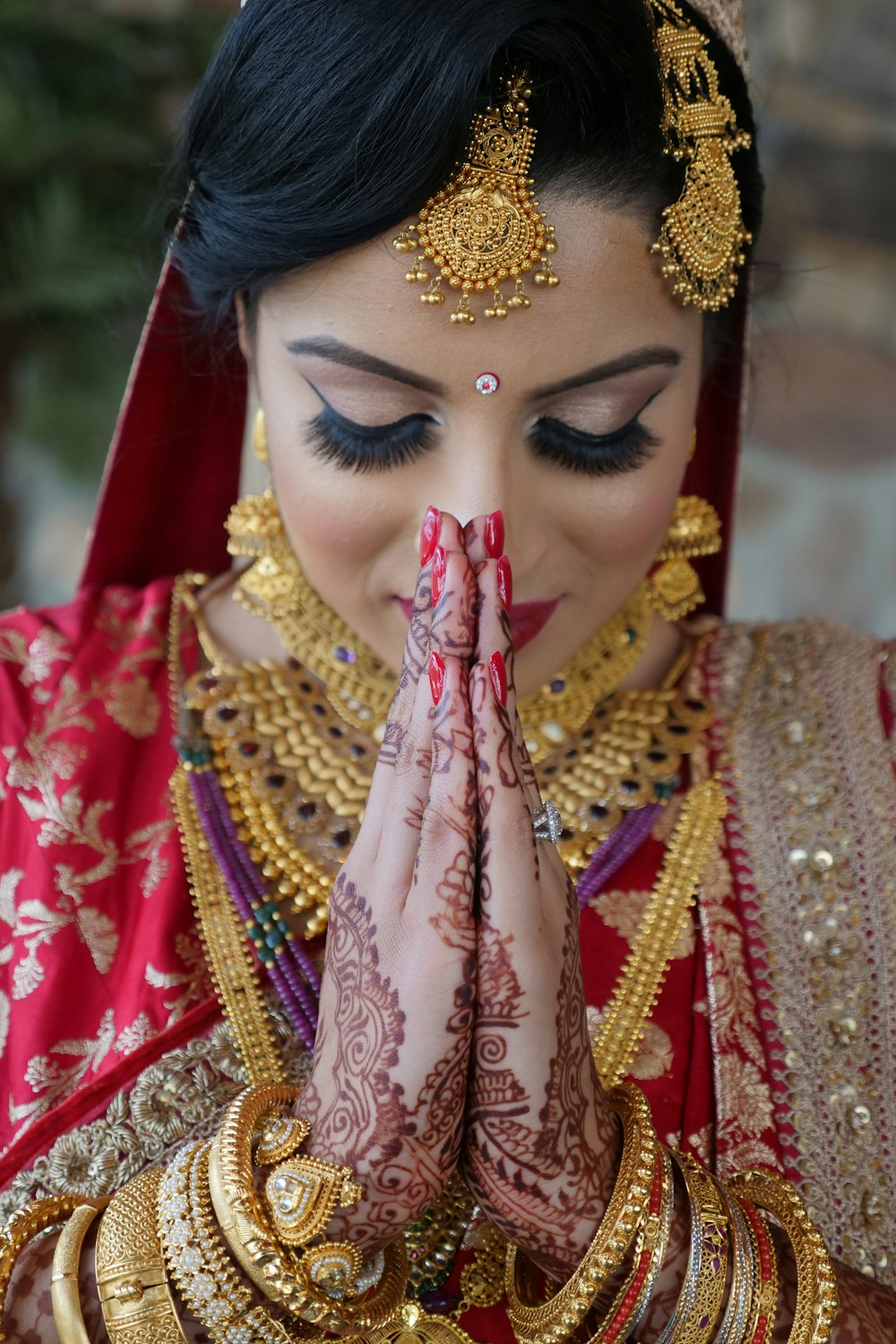
The “bindi” is placed in the middle of the forehead, the space between the eyebrows. Traditionally, “bindi” is circular and red in colour but nowadays, we get bindis in all colours, shapes and sizes.
Scientific Reason: The bindi is placed at the centre of the forehead.
The centre of the forehead, or the “Ajna Chakra”, is a major nerve point of the human body.
“Ajna Chakra” is also known as the place of the “Third eye”. The third eye provides us with the ability to see the future.
The “third eye” spot is the commanding centre of the body and helps in preserving mental balance.
Indian weddings are always hectic, so the bride is adorned with a bindi and sandalwood dots around the eyebrows, this helps the bride keep her calm when all around her are losing theirs.
2. Sindoor or vermilion powder

Sindoor or vermilion powder is a red line drawn at the centre of the start of the hairline.
Sindoor or vermilion powder is worn only by married women. Traditionally, the indoor is first applied by her husband, as a part of a wedding ritual.
Scientific Reason: Sindoor or vermilion powder is composed of turmeric, lime, and a minute level of mercury.
Vermilion powder is said to have health benefits. The presence of mercury in the vermilion relaxes the mind and cools down the body of the woman.
Sindoor is applied on the “crown Chakra”, hence it helps activate the most powerful chakra of all the 7 chakras.
3. Maang Tikka

Maang tikka is a forehead jewellery piece that rests on the bride’s crown with an elaboration at the end, which falls on her forehead.
Scientific Reason: The mang tikka is worn on the central parting of the forehead.
The central part of the forehead controls the heat of the body.
The Ajna Chakra which means ‘to know or to perceive’ is located in the middle of the forehead.
The pendant of the maang tikka falls right at the spot of the Ajna Chakra.
The Ajna chakra is represented by two petals which signify the union of the male and female energies on a physical, emotional and spiritual level.
4. Kajal

Kajal is applied along the waterline and lash line of the eye. It is believed that kajal protects us from all the evil spirits and provides a cooling effect to the eyes. Today it has become a major part of the bridal makeup look.
Scientific Reason: Kajal has a cooling effect and helps in relaxing the eyes.
Kajal acts as a protective shield against dust particles and keeps the eyes active and glowing.
Kajal also has healing properties and helps decrease the red spots in the eyes.
5. Karn Phool or Earings

Karn phool or kaan phool or earrings are available in many sizes and shapes.
Chandbalis, jhumkas, hoops or studs which can be set with precious stones is available easily in India.
Scientific Reason: The outer part of the ear where we wear the earrings is an acupressure point.
Acupuncture effect and helps in curing menstrual problems. The acupressure point gets pressed when we wear earrings, this helps in keeping the kidney and bladder healthy.
6. Nose ring or “Nath”.
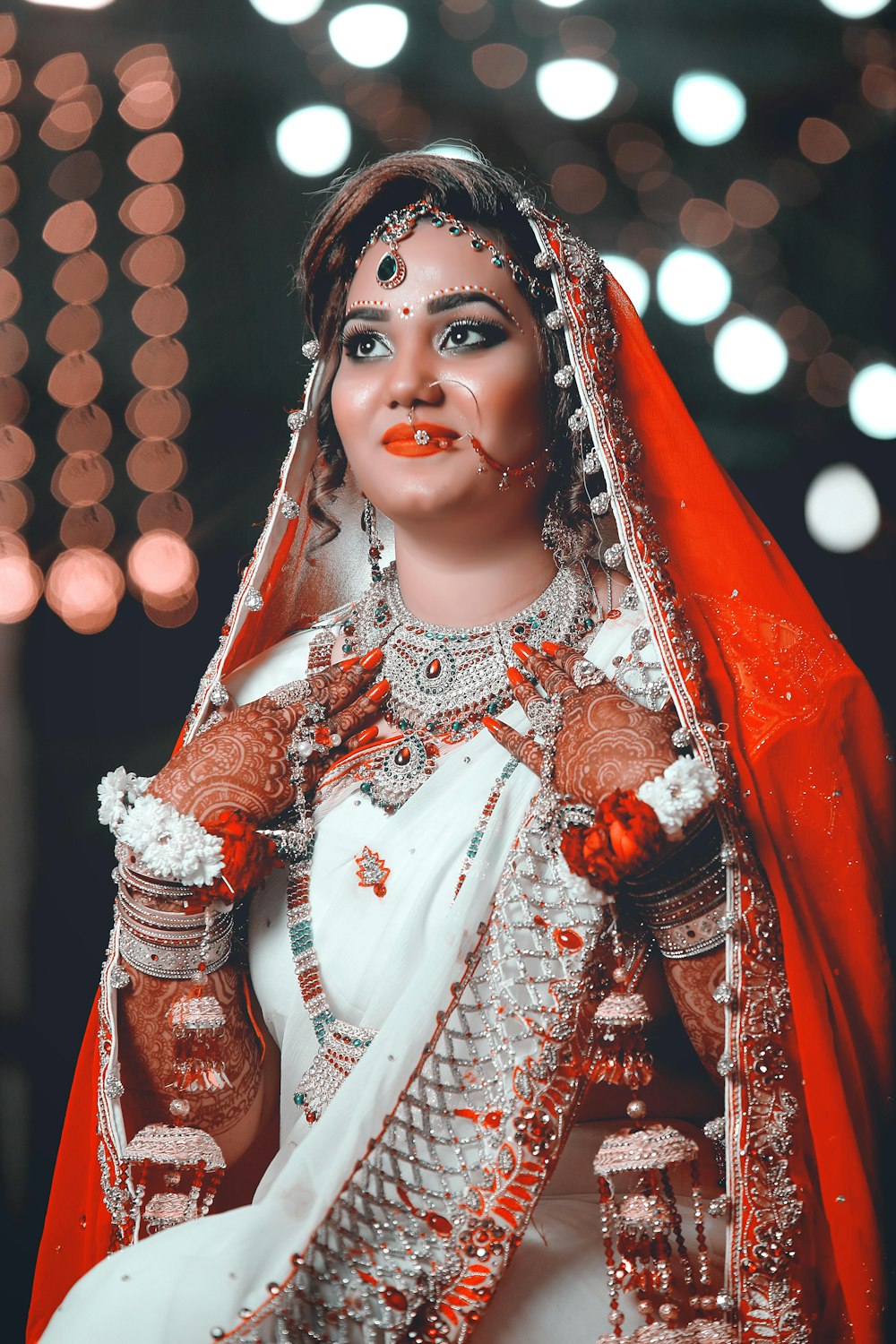
Nath or the nose ring can be worn pierced through the nostril or clipped on as well.
Nose rings come in many different styles like hoops and studs. Wearing a gold nose ring is the most beneficial.
Scientific Reason: The spot where the nose piercing is done is linked to the reproductive organs of a woman.
Hence, it eases menstrual cramps and labour pains. It also controls brain wavelength which protects the women from getting hypnotized.
7. Necklace or Haar

Haar or necklace is the centre point of bridal jewellery. They can be as minimal or extravagant.
Stone sets, chokers and layered necklaces are mostly preferred during weddings and festival season.
Scientific Reason: One of the most vital necklaces, in India, is “The Mangalsutra”. It is made up of black and gold beads adorned with a pendant in the centre, embedded with gemstones and diamonds.

A mangalsutra is worn by only married women, as a symbol of love and symbolizes the longevity of the husband.
Scientific Reason: Necklace worn around the neck helps in regularizing blood circulation. The necklace also helps in controlling the blood pressure of women.
Mangalsutra has black beads which protect from evil eye and gold beads, which helps absorb positive energies in the universe.
8. Bajuband or Armband

Bajuband is an armband that a woman wears tightly across her forearm.
It is usually made of gold but nowadays is also available in other precious metals.
Scientific Reason: The armband helps in monitoring the blood circulation of the arms.
It also creates the right amount of resistance that helps in comforting the arms.
9. Bangles

Anyone can spot a new bride from the red and white bangles on her wrists.
Bangles are made of glass or precious metals and are available in all colours.
Scientific Reason: The tingling sound of the bangles enhances the grace of a woman.
The material of the bangle helps in strengthening the bones of the hand.
The friction created by the materials, allows the qualities and properties of the bangle to enter the body and strengthens the bones. Hence, wearing gold bangles is preferred.
10. Mehendi

Applying Mehendi on a bride’s hands and feet is the major part of the bridal look.
The deep colour of her Mehendi is said to indicate the deep love from her husband.
Mehendi designs come in many different patterns and styles.
Scientific Reason: Mehendi has a cooling effect on the hands and legs.
The cooling effect distresses the nerves which in turn cools down the body and helps heal any pain on the body.
11. Haathphool or Rings

Haathphool or finger rings are made of decorative stones and chains over the hand.
Scientific Reason: The finger rings are said to stimulate brain activity.
The metallic friction created from the rings is said to promote good health of the wearer and it also induces confidence and relaxation.
Hence, many people wear rings made of gemstones. A person can wear gemstones as per the needs suggested to him/her by looking at the person’s astrological chart.
12. Kamarband or a Waistband
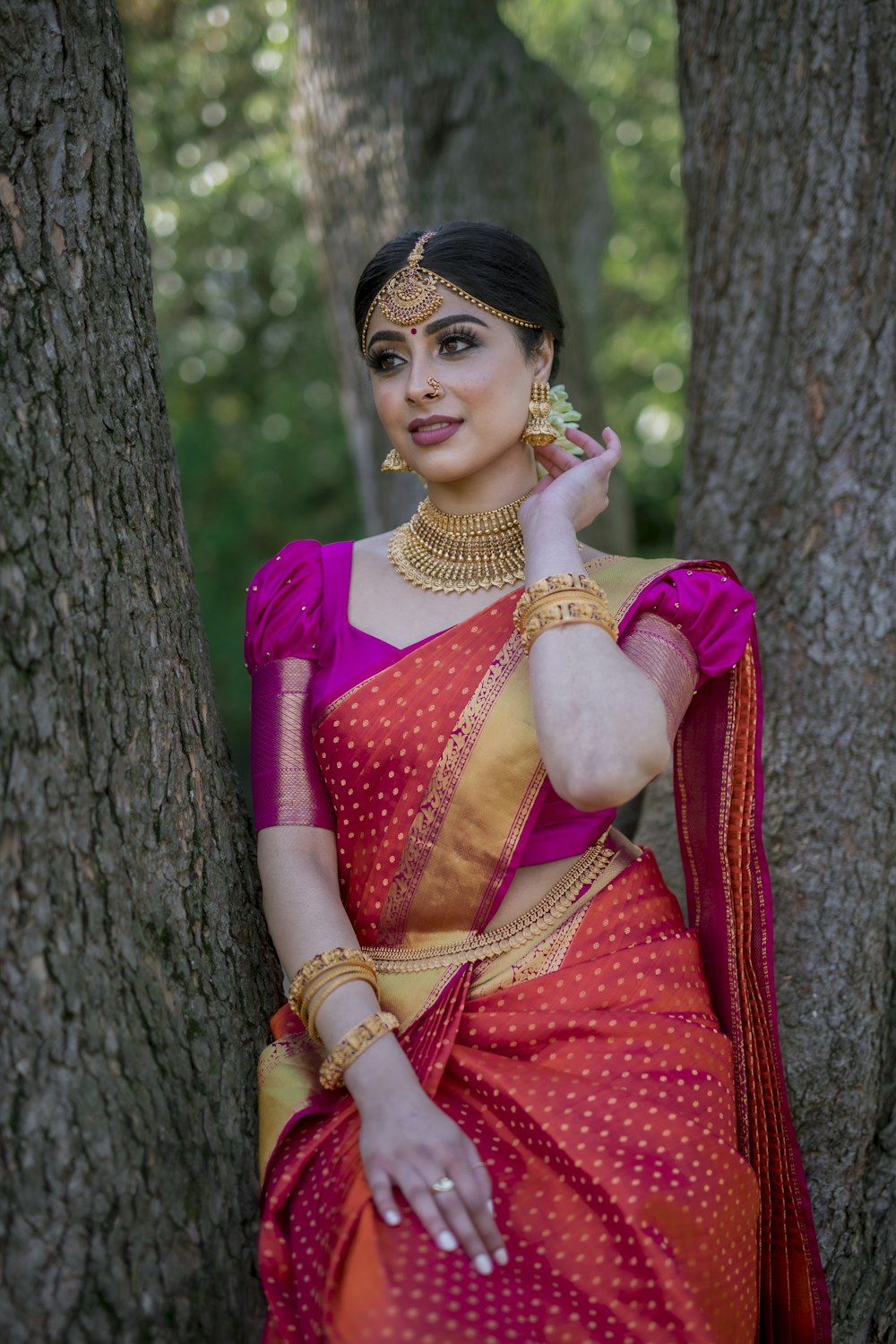
Kamarband is a waistband generally made of gold but can be made of other precious metals as well.
Scientific Reason: Kamarbandh helps in regulating the menstrual cycle.
The waistband also provides relief during menstrual cramps. Wearing a silver waistband can help in controlling belly fat.
13. Payal or Anklets

Payals are the anklets usually made of silver and make a pleasant clinking noise when walked with.
Anklets usually come with a slender chain or a thick multi-layered design.
A woman wearing anklets is regarded as an incarnation of goddess Lakshmi. The anklets cannot be made of gold as wearing gold on the feet is considered inauspicious.
Scientific Reason: Anklets provide relief from Sciatica. It is the pain that arises due to weakness in the legs.
Anklets help in proper blood circulation and help in curing swollen heels.
Wearing anklets helps increase immunity and supports in curing hormonal imbalance, menstrual diseases, infertility and obstetrics.
14. Bichhiya or toe ring
Bichhiya or toe rings are usually worn on the second toe and is made of silver.
Scientific Reason: The blood vessels of the uterus and heart are connected to the second finger of the feet. Hence, toe rings are worn on the second toe.
The toe rings help in the regulation of the blood flow and maintain the menstrual cycle.
The toe rings also help in retaining the reproductive health and fertility of married women by lowering the risk of miscarriage.
15. Gajra/Keshapasharachana or Hair Accessory
Gajra is a hair accessory made of flowers.
Gajra is usually prepared from fresh flowers like jasmine, bel, roses or marigold which are weaved into the hairstyle.
“Keshapasharachana” means “hair adornment”.
An Indian bride’s hair is washed and then dried and fragranced with aromatic sticks.
Then the hair is tied in braids or a bun and is adorned with flowers called the “gajra”.
Scientific Reason: Jasmine, the queen of flowers, has a long-lasting fragrance and freshness. Hence, it is widely used in making “gajras”.
The fragrance of the “gajra” helps a woman feel and stay refreshed for the entire day. It is better than spraying chemical deos and perfumes.
16. Bridal Outfit
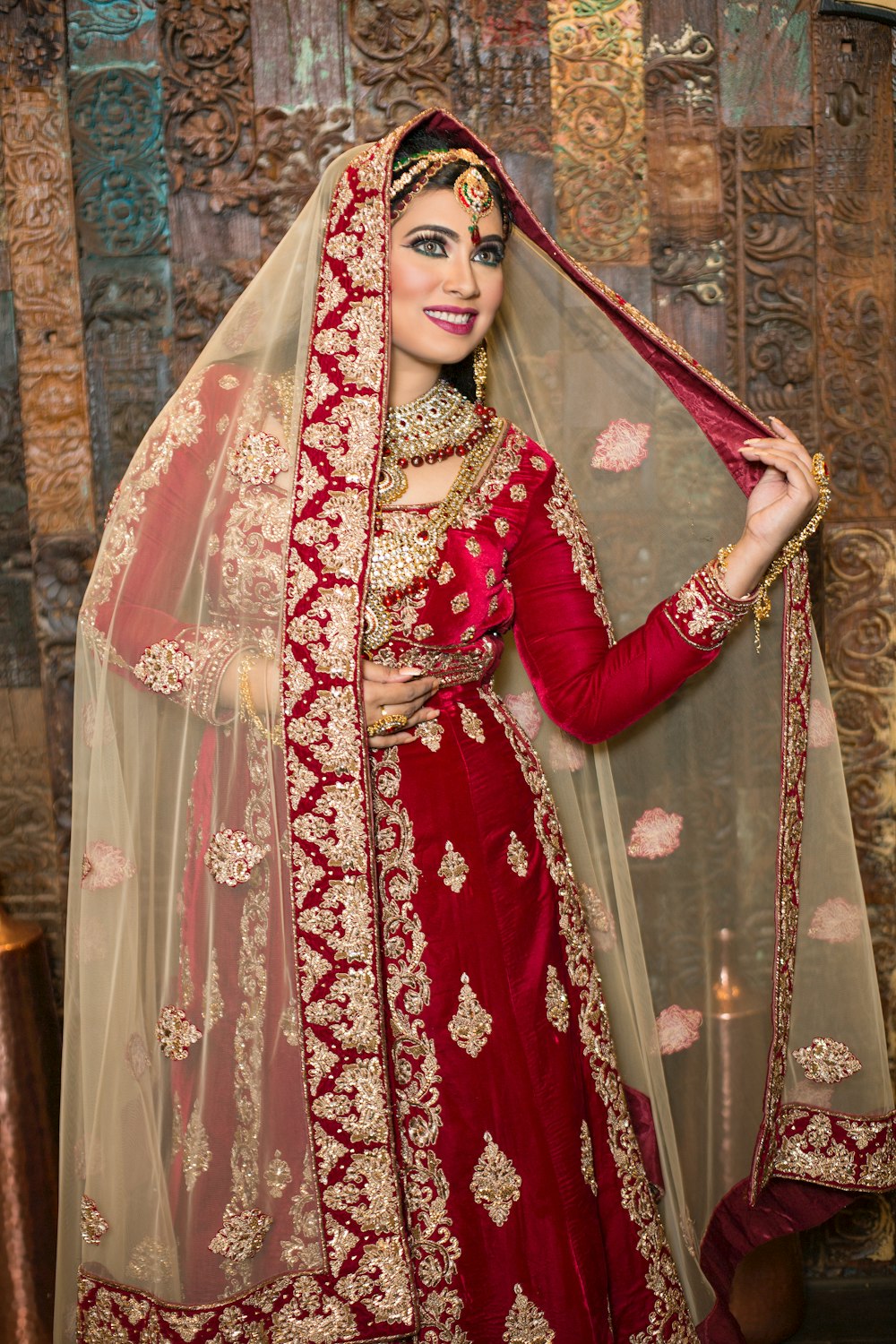
The bridal dress/ ‘suhag ka joda’ is the most important element in a bride’s attire.
The traditional Indian bridal outfits include lehenga, saree and salwar suit.
The bridal dress changes across the various cultures and states of India.
The most preferred colour of the bridal outfit is “Red”, which is heavily embroidered with beads and works of gold embroidery work.
Scientific Reason: Red is considered an auspicious colour that signifies love and wellbeing.
The veil an important part of a bride’s outfit is symbolic of modesty and youth.

If you know about
any other scientific reasons
that can explain the Importance of “16 Shrungar”
then, do let me know in the comment section below.
Discover more from Dreamz&Experiences
Subscribe to get the latest posts to your email.



Beautiful and very informative. You have covered this topic in depth and at the same time, its to the point.
Like the middle toe for toe ring, does the ring finger for rings have any significance? Is it related to the heart as well?
Please do paste a lovely pic of yours too, with a bindi, earrings and nose ring.. All the best! looking forward to more reads like this…
Rings on the fingers have their own significances and colours associated with them…..will cover these aspects in my future blogs 💖. ….will send u my wedding pics 😬💖
Thank you for always motivating me 🌟🥰💖🙏